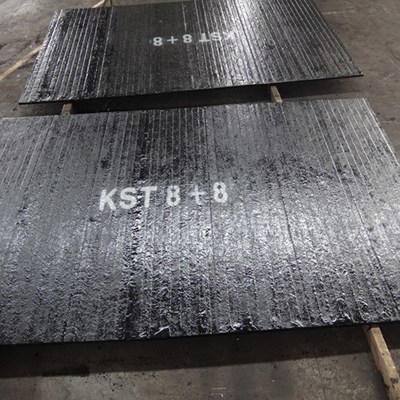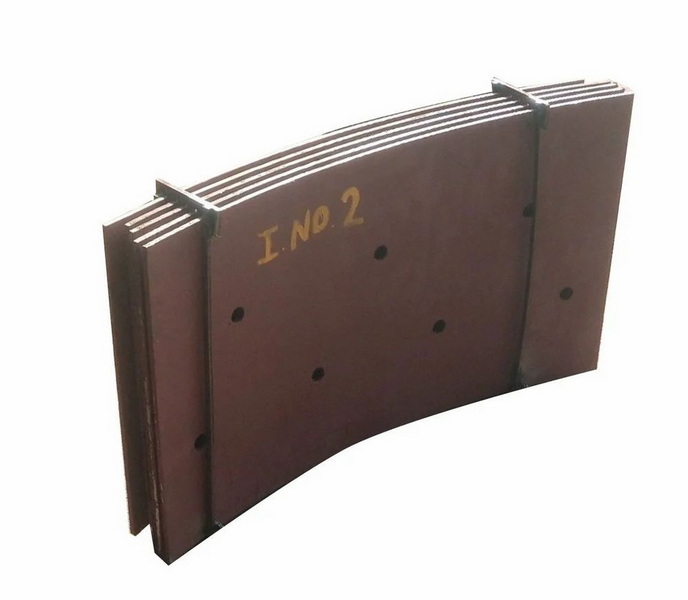Content Menu
● Material Composition
● Manufacturing Process
● Plate Thickness and Size
● Surface Finish
● Market Demand and Supply
● Geographic Location
● Customization and Special Features
● Brand Reputation
● Economic Factors
● Quality Standards and Certifications
● Conclusion
● Frequently Asked Questions
>> 1. What is the average price range for chrome carbide plates?
>> 2. How can I determine the right thickness for my application?
>> 3. Are there any maintenance requirements for chrome carbide plates?
>> 4. Can chrome carbide plates be welded?
>> 5. What industries commonly use chrome carbide plates?
Chrome carbide plates are widely recognized for their exceptional wear resistance and durability, making them a popular choice in various industrial applications. However, the price of these plates can vary significantly based on several factors. Understanding these factors is crucial for businesses and individuals looking to purchase chrome carbide plates. In this article, we will explore the key elements that influence the pricing of chrome carbide plates, providing insights into the market dynamics and helping you make informed purchasing decisions.

Material Composition
The primary factor influencing the price of chrome carbide plates is their material composition. Chrome carbide is a compound made from chromium and carbon, known for its hardness and resistance to wear. The specific ratio of chromium to carbon can affect the properties of the plate, including its hardness, toughness, and wear resistance. Plates with higher chromium content tend to be more expensive due to their superior performance characteristics.
The quality of the raw materials used in the production of chrome carbide plates also plays a significant role in determining their price. High-purity chromium and carbon sources can lead to better quality plates, which can justify a higher price point. Manufacturers often invest in sourcing the best materials to ensure that their products meet industry standards and customer expectations.
Manufacturing Process
The manufacturing process used to create chrome carbide plates also plays a significant role in determining their price. There are various methods for producing these plates, including:
- Thermal Spraying: This method involves spraying molten particles onto a substrate to create a coating. It is often used for applications requiring a thin layer of chrome carbide. The cost of thermal spraying can vary based on the equipment used and the complexity of the application.
- Cladding: In this process, a layer of chrome carbide is bonded to a base material, providing enhanced wear resistance. Cladding can be more expensive due to the need for specialized equipment and skilled labor.
- Casting: This method involves pouring molten chrome carbide into molds to create plates of specific shapes and sizes. Casting can be cost-effective for producing large quantities but may require significant upfront investment in molds.
Each manufacturing process has its own cost implications, with more complex methods typically resulting in higher prices. Additionally, the choice of manufacturing process can affect the final properties of the plates, such as their hardness and wear resistance.
Plate Thickness and Size
The thickness and size of chrome carbide plates are critical factors that influence their price. Thicker plates generally offer better wear resistance and durability, making them more expensive. Additionally, larger plates require more raw materials and may involve more complex manufacturing processes, further driving up costs.
When selecting the thickness of a chrome carbide plate, it is essential to consider the specific application and the type of wear it will encounter. For example, applications involving heavy impact or abrasion may require thicker plates to ensure longevity. Conversely, applications with lighter wear may be adequately served by thinner plates, allowing for cost savings.
Surface Finish
The surface finish of chrome carbide plates can also impact their pricing. Plates that undergo additional finishing processes, such as grinding or polishing, may have higher costs due to the extra labor and time involved. A smoother surface finish can enhance the performance of the plate in certain applications, justifying the higher price.
In applications where friction is a concern, a polished surface can reduce wear on both the plate and the interacting components. This can lead to longer service life and reduced maintenance costs, making the investment in a higher-quality finish worthwhile.

Market Demand and Supply
Like any commodity, the price of chrome carbide plates is influenced by market demand and supply dynamics. When demand for these plates increases—due to growth in industries such as mining, construction, and manufacturing—prices may rise. Conversely, if supply exceeds demand, prices may decrease. Seasonal fluctuations and economic conditions can also affect market dynamics.
For instance, during periods of economic growth, construction and mining activities often increase, leading to higher demand for wear-resistant materials like chrome carbide plates. Conversely, during economic downturns, demand may decrease, resulting in lower prices. Understanding these market trends can help buyers time their purchases for optimal pricing.
Geographic Location
The geographic location of both the manufacturer and the buyer can significantly influence the price of chrome carbide plates. Transportation costs, tariffs, and local market conditions can all affect pricing. For instance, purchasing plates from a local supplier may reduce shipping costs, while importing plates from overseas may incur additional fees.
Additionally, regional demand can vary, with some areas experiencing higher demand for chrome carbide plates due to specific industries or applications. Buyers should consider local suppliers and the associated costs to determine the most economical purchasing options.
Customization and Special Features
Many industries require customized chrome carbide plates tailored to specific applications. Customization can include unique dimensions, shapes, or additional features such as holes or grooves. The more specialized the plate, the higher the price is likely to be due to the additional engineering and manufacturing processes involved.
Customization can also extend to the surface treatment of the plates, such as applying coatings to enhance corrosion resistance or improve performance in specific environments. These additional features can significantly impact the overall cost but may be necessary for optimal performance in demanding applications.
Brand Reputation
The reputation of the manufacturer can also influence the price of chrome carbide plates. Established brands with a history of producing high-quality products may charge a premium for their plates. Buyers often prefer reputable manufacturers to ensure they receive reliable and durable products, which can justify the higher costs.
When selecting a supplier, it is essential to consider their track record, customer reviews, and any certifications they may hold. A reputable manufacturer is more likely to provide consistent quality and support, making them a worthwhile investment.
Economic Factors
Broader economic factors, such as inflation, currency fluctuations, and changes in raw material costs, can also impact the pricing of chrome carbide plates. For example, if the cost of raw materials used in the production of chrome carbide increases, manufacturers may pass these costs onto consumers, resulting in higher prices.
Additionally, global economic conditions can affect supply chains and production costs. Buyers should stay informed about economic trends that may impact the pricing of chrome carbide plates to make timely purchasing decisions.
Quality Standards and Certifications
Finally, the quality standards and certifications associated with chrome carbide plates can influence their price. Plates that meet specific industry standards or have certifications for quality and safety may command higher prices. Buyers often seek certified products to ensure compliance with regulations and to guarantee performance.
Certifications can provide assurance that the plates have undergone rigorous testing and meet the necessary specifications for their intended applications. Investing in certified products can lead to long-term savings by reducing the risk of failure and associated downtime.
Conclusion
In conclusion, the price of chrome carbide plates is influenced by a variety of factors, including material composition, manufacturing processes, plate thickness and size, surface finish, market demand, geographic location, customization, brand reputation, economic conditions, and quality standards. Understanding these factors can help buyers make informed decisions when purchasing chrome carbide plates, ensuring they get the best value for their investment.

Frequently Asked Questions
1. What is the average price range for chrome carbide plates?
The average price range for chrome carbide plates can vary widely based on the factors discussed, typically ranging from $20 to $100 per square foot.
2. How can I determine the right thickness for my application?
The right thickness depends on the specific wear conditions and the type of material being processed. Consulting with a supplier or engineer can help determine the best thickness.
3. Are there any maintenance requirements for chrome carbide plates?
Chrome carbide plates generally require minimal maintenance, but regular inspections for wear and damage are recommended to ensure optimal performance.
4. Can chrome carbide plates be welded?
Yes, chrome carbide plates can be welded, but it is essential to use appropriate welding techniques to avoid compromising their wear-resistant properties.
5. What industries commonly use chrome carbide plates?
Chrome carbide plates are commonly used in industries such as mining, construction, agriculture, and manufacturing, where wear resistance is critical.
















